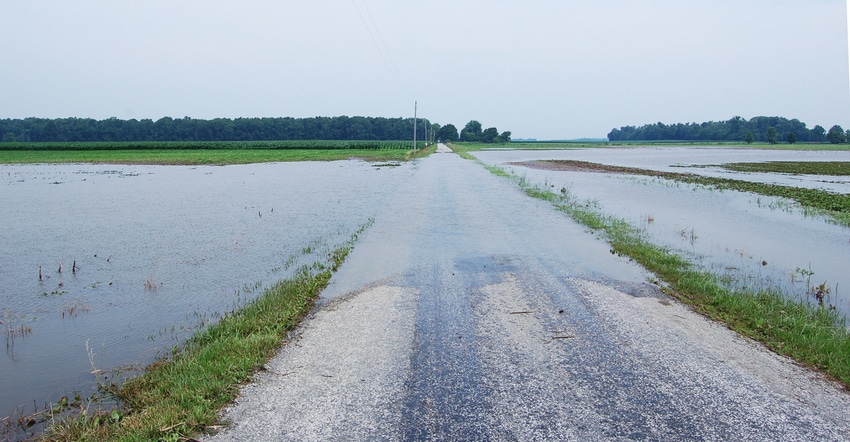
Ask Justin Schneider to name the key piece of legislation from the 2017 session of the General Assembly that affected all Hoosiers and the one that affected Indiana agriculture, and his answer is the same for both. The legislative specialist for Indiana Farm Bureau says that without a doubt, funding road and bridge repair and construction with a comprehensive approach was the biggest accomplishment.
You can expect to pay more at the pump and at the license branch, but you will get more in return, he observes. Upgrading Indiana’s road infrastructure can begin in earnest.
“We were pleased with the results,” Schneider says. “The changes will generate a significant amount of money for local road and bridge repair over the next seven years.”
Here is a look at seven key provisions of Indiana’s new road funding plan which will likely impact you in some way:
1. Significant new money for local roads and bridges. The changes will produce $260 million in new funding for local roads and bridges by June 30, 2018. By 2024, the amount generated per year will be $300 million. The average increase over the next several years will be $300 million, Schneider says.
2. Historic investment in Indiana roads and bridges. Overall, this is the largest investment in Indiana’s road infrastructure ever. The changes are expected to generate $6 billion over the next seven years. This includes the amount raised for local road and bridge repair and construction.
3. Shift of money generated by gasoline sales tax to road fund. This is a key piece of the legislation, Schneider says. Phased in over time, sales tax collected on gasoline sales will eventually go into the road fund rather than the general fund.
“Due to projections of increasing revenue over time, legislators felt that the decrease in funds sent to the general fund by this change will be recovered over time,” Schneider says. There was some support for an increase in the cigarette tax to help fill this gap, but it evaporated.
4. Increase in tax on gas and diesel fuel. There is an immediate 10-cent-per-gallon increase on gas and diesel fuel. The tax can increase over time, but will be indexed so it doesn’t increase by more than 1 cent per gallon per year.
5. New fee on passenger vehicles. A transportation infrastructure fee of $15 per year for passenger vehicles is included in the bill. Electric cars will be assessed $150 per year, and hybrid vehicles will pay an additional $50.
6. Significant increases in fees for larger trucks. Farm plate fees for trucks over 26,000 pounds will increase by these amounts: $36 for trucks 26,001 pounds to 36,000 pounds; $60 for trucks 36,001 to 48,000 pounds; $90 for trucks 48,001 to 66,000 pounds; $120 for trucks 66,001 to 78,000 pounds; and $168 for trucks over 78,000 pounds.
The rates for commercial, nonfarm trucks are also graduated, but are double the fee increases for farm vehicles, Schneider says.
7. Authorizes weigh-in-motion pilot program. Motor carrier enforcement authorities will experiment with this program to enforce vehicle size and weight restrictions.
About the Author(s)
You May Also Like




